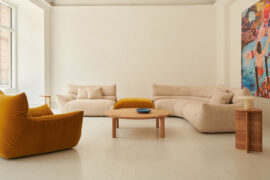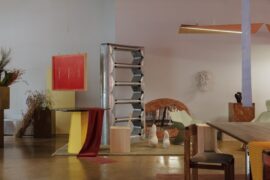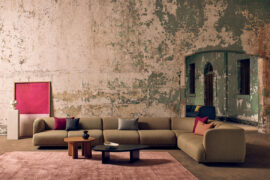Glass has become a popular feature in modern design, so, when paired with performance fabrics, interiors can be protected from UV radiation and excess heat.
June 3rd, 2019
Glass has become one of the defining factors of modern architectural design, with door-to-ceiling windows now a go-to in commercial design. Chosen not only for its sleek and clean appearance, but it also increases the level of natural light within an interior. It’s not a feature expected to diminish in popularity either, with architects incorporating glass into their designs continue to be a growing trend. However, while it may have the desired effect from a design perspective, utilising glass comes with further design considerations for interiors, namely an increase in sun glare, UV radiation and heat coming into the building.

In this sense, while glass may look aesthetically pleasing on the exterior, it can actually have negative effects on an interior, such as excess heat and fabric fading from UV radiation.
In a bid to counteract these negative aspects, performance fabrics – specifically when used in window coverings – provide functional qualities such as durability, UV protection, comfort and thermo-regulation.
To ensure that the bene ts of glass in buildings are not compromised in both residential and commercial spaces, the following considerations should be taken into account when specifying window covering; maintaining view through, fading fabrics, and space saving through heat reduction.

Download the whitepaper to find out how specifying high-quality performance fabrics can have a positive impact on design by combatting the issues that come with utilising glass in buildings.

INDESIGN is on instagram
Follow @indesignlive
A searchable and comprehensive guide for specifying leading products and their suppliers
Keep up to date with the latest and greatest from our industry BFF's!

A curated exhibition in Frederiksstaden captures the spirit of Australian design

On 6th September 2025, Saturday Indesign went out with a bang at The Albion Rooftop in Melbourne. Sponsored by ABI Interiors, Woodcut and Signorino, the Afterparty was the perfect finale to a day of design, connection and creativity.

The inaugural Adelaide Design Week *everywhere unfolded across five days and nights, bringing together the creative community in a way that hadn’t happened before. Organiser and regular contributor Bronwyn Marshall gives us the inside story.
The internet never sleeps! Here's the stuff you might have missed

Discover the range designed to let people gather and ideas flow

A star of the 2025 INDE Awards is Jenchieh Hung + Kulthida Songkittipakdee / HAS design and research, a practice that made quite the impression on the jury and in the awards.

As French-Lebanese Architect Lina Ghotmeh prepares for lectures in Melbourne and Sydney, we hear about the philosophy shaping her internationally celebrated practice.

London-based design duo Raw Edges have joined forces with Established & Sons and Tongue & Groove to introduce Wall to Wall – a hand-stained, “living collection” that transforms parquet flooring into a canvas of colour, pattern, and possibility.